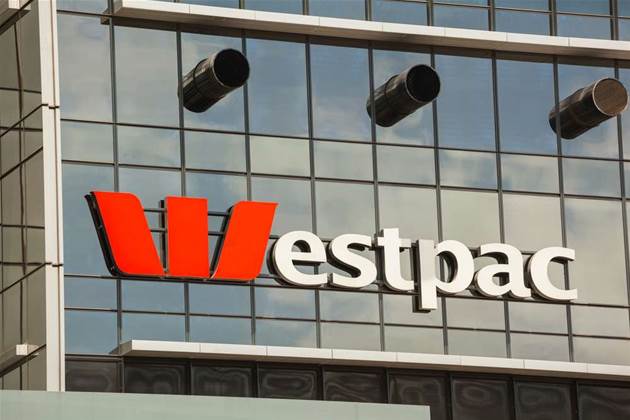Forget the buzzword “banking-as-a-service”.

And forget all the other agile-cum-fintech claptrap that’s now de rigueur window dressing for any major institution’s results presentation to placate customers and investors supposedly ravenous for transformation.
On Monday Westpac bought itself, for wont of a better description, a ground floor stake in an emerging platform that will finally allow it to crawl out of a swamp of chronic dependency on decades-old monolithic core platforms that have long impeded modernisation.
And frustrated regulators.
Dubbed 10x Banking, the new cloud-native, API-driven buggy is being pitched as a separate and purist digital play that will give Australia’s oldest bank a base to develop a best of breed stack and suite of services Westpac CEO Brian Hartzer hopes will later be subsumed back into the mothership.
And it’s been a long time coming.
“Core” has been touchy word at Westpac ever since CBA’s sublimely radical former tech chief Michael Harte and his boss, reformed assembler cutter Ralph Norris, used their own real time core replacement to belt rival Westpac over the head with for more than five years.
In response, Westpac first hired former CBA CIO Bob McKinnon; then Harte’s 2IC Dave Curran, to mark their rivals on the field.
A decade later, Westpac has hired Craig Bright, who on merit should have been putting NAB on the right track, but was erroneously passed over and went overseas. To his credit.
Bright now appears to have bitten the bullet on the big test of vanquishing legacy, and in an intelligent and pragmatic way.
Even though Westpac is carefully tiptoeing around any direct reference to a ‘core systems replacement’ or ‘core systems overhaul’, it’s on, even if the timing isn’t great at a limelight level.
Westpac has spent the last 10 years telling the market it could make enhancements without a billion dollar CBA-style rip and replace.
Whether this was a deliberate ‘long game’ play or a just well-founded fear of costly systems replacement, sooner or later any mechanic gets wary about issuing optimistic roadworthy certificates, especially when regulators are mid-stream though a crackdown.
Bright has made a low-key, diplomatic and considered entry into one of Australia’s toughest CIO gigs. But he has been quietly cleaning house, with a leaning towards function and effect over brand names and buzzwords.
This year’s annual results were never going to be the time to paint a big blue-sky picture of Westpac as the trailblazing bank of the future, especially with a stinker of a profit on the back of refunds for rip-offs and a cruelled mortgage book.
There is still another year’s worth of humble pie to be eaten, as illustrated by the ritual sacrifice of bonuses that let executives pass ‘go’ on the oligopoly board without collecting rotational fees.
But make no mistake the 10x deal – no price tag yet, few specifics – is about securing a flexible, scalable base that can rapidly test and deliver new services from a clean slate and then, if need be, port them back into the main bank’s systems.
Systems that must, at some stage later, be replaced or modernised.
The thing called 10x looks like new model architecture. It walks like new model architecture. And it talks like new model architecture. But Westpac chief Brian Hartzer stressed is fairly adamant it is not a replacement. Yet.
“It's really more about a new growth opportunity that we see as opposed to replacing the core banking activity that we that we do,” Hartzer told iTnews.
“It will attach in various important ways to our existing technology infrastructure for payments and those sorts of things.”
Payments, and the pain their underlying systems can cause, are more than familiar to Hartzer after he was pummelled before Parliament’s special new banking committee over delays connecting to the real time New Payments Platform (NPP).
And then there was the small issue of NPP PayID look-up abuses that slipped through Westpac’s security net, possibly a reason why Westpac was trumpeting it shifted 40 percent of value across the NPP.
Dig into 10x’s promotional materials a little it’s not hard to see why Westpac has warmed to it, especially as it prepares for open banking, the shift to predominantly real time payments and the various data hungry demands for comprehensive credit reporting.
Aside from all the promises of a core architecture called SuperCore, and an “application stack enables hundreds of apps in legacy to be consolidated to a single platform” 10x says its data model is cut from ISO-20022, which is what the RBA, SWIFT and Australian bank payments are standardising on.
Hartzer rejected comparisons of 10x to NAB’s UBank, which was meant to forge a path out of brand core legacy but has instead been left as an island thanks to Oracle’s inability so sell core renewal outside a handful of major institutions.
“I don't think that's the right analogy, we've been investing in FinTech partnerships. Now Reinventure just hit its five year anniversary. And as part of that we've continued to look at ways to develop new services for our customers and to take advantage some of the capabilities that are being built externally,” Hartzer told iTnews.
So what does 10x bring to the table that Westpac’s unashamed hybrid cloud and agile customer service hub don’t already have?
“It's a very clean, modern cloud based platform that allows us to plug in a variety of different partners for different aspects of services,” Hartzer said.
“I don't really want to say too much more about what we're planning there but we are excited about it as a as an addition to our suite of services.”
Looks like core. Walks like core. Talks like core … watch this space.


_(20).jpg&h=140&w=231&c=1&s=0)
.png&h=140&w=231&c=1&s=0)
_(22).jpg&h=140&w=231&c=1&s=0)




_(26).jpg&w=100&c=1&s=0)

 iTnews Executive Retreat - Security Leaders Edition
iTnews Executive Retreat - Security Leaders Edition












_(1).jpg&h=140&w=231&c=1&s=0)



